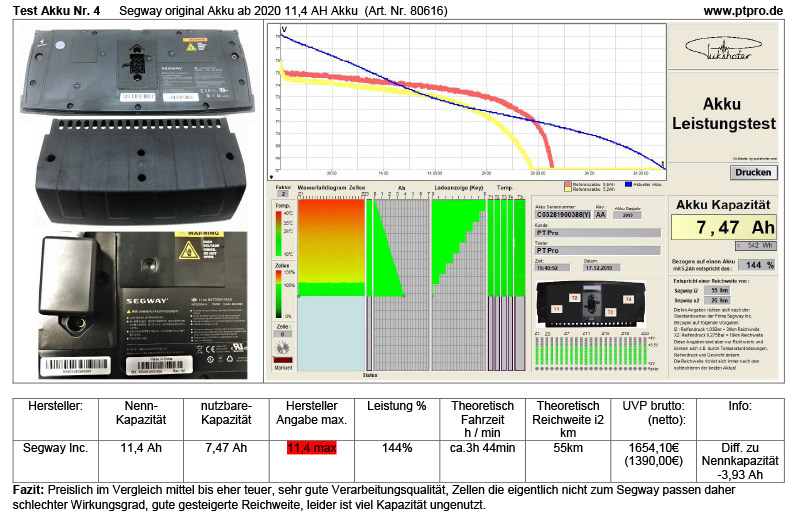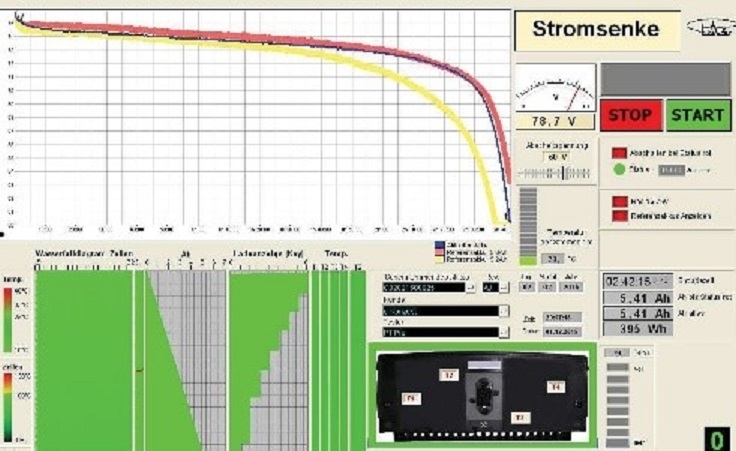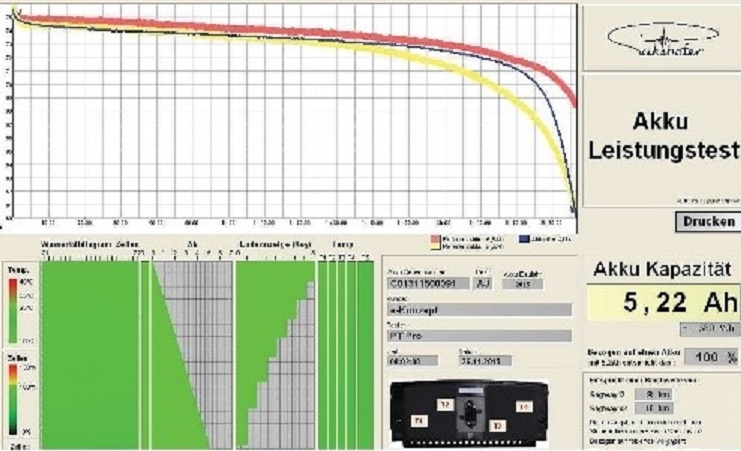Battery Repair Segway PT

The Battery Professional for - repairs, diagnostics and performance testing - on the Segway PT Battery System
PT Pro Battery - Workshop:
PT Pro Service for your Segway PT Battery:
- Cell Scan (functional check of each battery cell group)
- Calibration and balancing of the individual cells of the battery
- Charge capacity check with test report and battery certificate
- Reanimation of deep discharged Segway PT batteries
- Defect or determination of the source of error for necessary further repairs
- Cell or cell group exchange of localized defective cell groups
- Replacement of the BMS board in case of defect (motherboard)
- Battery Rebuild, cell exchange, cell renewal, battery refresh
For Download
Segway PT Battery Repair Request Diagnosis SheetSegway PT Battery Information
Li-ion Battery Manual
Battery serial numbers
Battery cells and BMS repair
Segway Lithium Battery Datasheet
Secure Shipping Segway PT Battery
ADR Dangerous Goods Sheet Segway Battery
Segway Battery Comparison Table 2020
Batteries 2020 11.4AH charge flashing indicator
Example of test report:
It's the batteries that breathe life into the Segway PT. The range of the Segway PT depends on the charge capacity of the batteries. The Segway PT always has two batteries installed. These should have the same charge capacity, as the performance always depends on the weaker battery. For this reason, it is especially useful and important for tour providers with several devices to know the performance of the batteries and to form equally strong pairs. Only in this way can they make full use of the power. For this reason, PT Pro offers a battery service geared to this need.
Battery performance is of particular importance for economical operation, and thus essential for any Segway PT Tour operator.
Battery Service for Segway i2 / x2:
Cell scan, calibration, charge capacity test, test report, battery - certificate.
Deeply discharged batteries can usually be reanimated by PT Pro. Thus, a very expensive battery replacement is avoided. Revive or reanimate a battery means to bring the cells, which have fallen overall below the power value of 60 volts and thus are no longer recognized by the Segway PT, back above this value. This is done through targeted charging pulse bursts.
This allows the Segway PT to recognize the Battery again. After another full charge cycle, the battery can be used as usual. It is advisable to perform a control cycle on the Battery Test System after reanimation. This is to be sure that the reanimation was successful and that all cells were reached. Likewise, this immediately determines the performance of the battery after resuscitation.
What to do in case of cell defect?
PT Pro will, of course, perform battery repairs if necessary.
A Segway PT battery is equipped with 92 individual Li Ion (LiFePo4) cells. These cells are in turn bundled into 23 cell groups, which are connected in parallel. Should one of these cell groups "go down", the entire power of the battery is "pulled down". Therefore, it is usually the most economical (cheapest) solution to replace only this one cell group to get the battery back to a usable useful power. In this form of repair, PT Pro is according to our customers the only provider in Europe who can do this and at the same time guarantees for his work.
If bad values are displayed for several cell groups or several cell groups are defective, we rather advise to replace the complete cell block. This is unfortunately no longer so attractive economically, but yields qualitatively an almost new result.
The cell groups or cell block is in turn connected to the BMS Board. This BMS board is responsible for charging, discharging, balancing, and communicating the battery to the Segway PT Base.
The BMS Board, in turn, is programmed to be vehicle-specific and transmits battery data such as charge level and battery status to Base. If the BMS board (main board) is defective or has hung up, the battery will not be detected by the Segway PT and will switch to status red (battery error).
Defective BMS boards may transmit incorrect data to the Segway PT, so a correct and definitive fault determination is only possible when the battery is open!
If the transmission from the BMS board, for example, to the battery test system is also faulty, this can result in misdiagnoses. Therefore, a final error determination is only possible on the open battery.

Prices:
Battery performance test for Segway PT Li-Ion batteries:
Price: € 40,- per battery plus VAT = € 47,60
(Battery- diagnosis, calibration, performance chart - test protocol)
(Caution. We inform that a battery performance determination takes about 9h time per battery. Optimal is when we get the batteries delivered fully charged.
The battery is fully charged and balanced, then slowly discharged on the test system to determine performance, and then fully charged and balanced again.)
Battery Reanimation for Deep Discharged Segway PT Batteries:
Price: € 52,- per battery plus VAT = € 61,88 plus performance test
Reanimation of deep-discharged Segway PT batteries by concentrated charge pulse shocks, cell scan and subsequent charge cycle. (The power test recommended afterwards is not included in the price and will therefore be added on.)
Accu resuscitation with power test:
Price: € 92,- per battery plus.VAT = 109,48 €
Performance test and resuscitation as described above.
BMS Board Reset:
Price: € 180,- per battery plus.VAT = € 214,20
Performance test and resuscitation as described above.
"Disassemble donor battery" (BMS) and check BMS:
Price: € 42,02 per battery plus.VAT = € 50,00
All prices plus VAT, plus shipping.
(Shipping costs- Packages up to 30kg. within Germany 6.99 incl. VAT)
Battery repairs: (All prices net, plus VAT, plus shipping)
Work time battery technician with all tests for fault finding Flat rate € 200,- net, plus VAT = 238,00 €
Included in the flat rate
- Opening the battery case for exact fault determination
- Testing the individual cell groups in the battery
- Testing the BMS board in the battery for function and errors
- Waterproof sealing of the battery case
The following costs, if necessary, will be added to the labor charge
- Replacement of individual cell groups in the battery € 80,- net, plus VAT per cell group = 95,20 €
- BMS board replacement for defective BMS boards € 250,- net, plus VAT = 297,50 €
- Refitting of the cells (Rebuild Lishen cell block) in total as a cell package € 478,99 net, plus VAT = € 570
- Rebuild the cells (Rebuild A cell block) in total as a cell package € 394,96 net, plus VAT = 470.00 €
Example:
Your battery has spent cells or cell block damage:
200,. € working time + 478,99 € cell block (Lishen) = 678,99 € net = 808.- € incl. VAT. (Lishen cell block)
200,. € working time + 394,96 € cell block (A cell block) = 594,96 € net = 708.- € incl. VAT. (A1 cell block)
Your battery has spent cells and the BMS board is defective. That means we can only use their battery case.
200,. € working time + 462,18 € cell block (Lishen) + 250, - BMS Board = 928,99 € net = 1105,49 € incl. VAT. (Lishen cell block)
200,. € working time + 394,96 € cell block (A cell block) + 250, - BMS Board = 844,96 € net = 1005,50 € incl. VAT. (A1 cell block)
All prices plus VAT, plus shipping.
We ask for your understanding that customers who do not release the repair must bear the following costs:
Test battery Total damage no repair 42.02 € net = 50.00 € incl. VAT.
Segway battery comparison chart and benchmarks
Testing procedure
The test procedure on which the comparison is based was performed in a standardized manner on the Pukshofer battery test system under identical conditions. For this purpose, the system was recalibrated and set the same for all test batteries. The cut-off voltage was set to 67V, which is also used by the Segway in use. This allows to achieve real results and all test batteries to really compare.
In the comparison, we refer mainly to the measurable values, our experiences which we could collect during the practical tests or which properties have been shown over longer periods of time, we describe briefly in free text, but have no influence on the comparison table. Only Li Ion batteries from 2016 (used) and new batteries of the respective series or type were tested.
What has happened in the Segway battery range?
Very long has unfortunately done in this segment as good as nothing.
The original Segway batteries in the Li Ion version which there were from 2006 have changed until 2019 as good as nothing. The revision numbers on the batteries show that there were small changes, which had less to do with the power or performance of the battery, but rather with changing cell manufacturers, manufacturing or production series. One wondered perhaps why despite advancing innovations in the battery field, ever stronger and more powerful batteries for e-bikes for the Segway PT's no improvements. This is partly due to the fact that the Segway market is very small and cells for batteries are mass-produced. In order to be produced cheaply, significant quantities are necessary. In addition, the Segway design can not use just any battery cells, but the cells must meet special for the Segway necessary properties. Especially regarding the power maintenance. For example, an e-bike that does not have to balance itself can easily use battery cells whose performance drops evenly. A Segway must be able to constantly call up high cell power for safety reasons. The e-bike can still be used to its full extent when the battery level is low, only the support of the motor decreases in terms of power. This would not be possible with the Segway or only possible with a high willingness to take risks and acceptance of a potential risk of falling. Therefore, special cells are necessary for the Segway battery. These must keep the voltage at a high level for a long time during use and not constantly decrease as the battery is discharged during operation, as is the case with the e-bike battery, for example. There are hardly any other areas of application for cells of this type in this performance group. This makes it difficult to find suitable cells on the global market. Most manufacturers have unfortunately refused to produce such cells or have discontinued them due to a lack of sufficient demand and the associated high costs. In addition, a long storage of battery cells is unfavorable and also the interim charging in a cold environment is harmful to the cells. We hope that these backgrounds bring it also to the end user somewhat more near why the topic Segway batteries is not an easy one and the batteries have a relatively high price. Alone only because of the cell problem for the batteries.
In the following test - report the following batteries are compared:
- New original Segway battery BJ 2019 Rev. AJ
- Used original Segway battery BJ 2016 Rev. AJ (2 years in use approx. 1500km used)
- Rebuild battery PTPro with original Lishen cells, used case, original BMS
- New 11.4AH original Segway battery BJ 2019 Rev AA Y series available from 2020
- Ultra High Cap battery from an expert compound of Segway screwdrivers, used case, Samsung High Cap cells, proprietary BMS
Price-performance rating:
To compare batteries in terms of price* and performance, the purchase price ( UVP incl. VAT) was calculated by the range per charge on the test system, resulting in the value "price per kilometer range". With this value, the batteries can be compared with each other despite different capacities. * Prices as of early 2020
| No | Designation | Gross | Range in km | Price gross per km range | Placement: |
|---|---|---|---|---|---|
| 1 | New original segway battery BJ 2019 Rev AJ | 1416,00€ | 40km per charge | 35,40€ P/L bad | 5 |
| 2 | Used original Segway battery BJ 2016 Rev. AJ | 950,00€ | 38km per charge | 25,00€ P/L (very good) | 2 |
| 3 | Rebuild battery PTPro with original Lishen cells | 1099,00€ | 45km per charge | 24,42€ P/L super | 1 |
| 4 | New 11.4AH original Segway battery Rev. AA Y series | 1654,10€ | 55km per charge | 30,07€ P/L ok | 4 |
| 5 | Ultra High Cap Battery by Verb. Segway Screwdriver | 2082.50€ | 83km per charge | 25.09€ P/L very good | 3 |
| No | Designation | Gross | Useful capacity | Price gross per km range | Placement: |
|---|---|---|---|---|---|
| 1 | New original segway battery BJ 2019 Rev AJ | 1416,00€ | 5.4 Ah | 262.22€ P/Ah bad | 5 |
| 2 | Used original Segway battery BJ 2016 Rev. AJ | 950,00€ | 5.3 Ah | 179,25€ P/Ah good | 2 |
| 3 | Rebuild battery PTPro with original Lishen cells | 1099,00€ | 6.2 Ah | 177,26€ P/Ah super | 1 |
| 4 | New 11.4AH original Segway battery Rev. AA Y series | 1654,10€ | 7.47 Ah | 221,43€ P/Ah Ok | 4 |
| 5 | Ultra High Cap Battery by Verb. Segway Screwdriver | 2082.50€ | 11.4 Ah | 182.68€ P/Ah very good 3 | 3 |
The calculation price by usable capacity in Ah is probably the most meaningful comparison calculation.
- The second place of the used battery, it is necessary to put into perspective, because the longevity through use is not taken into account here. This battery also falls somewhat out of the grid since otherwise only new batteries or new cells in the batteries were for comparison.
- The third place of the Ultra High Cap private accumulators it applies likewise to relativize. The purchase price of these batteries is 1750, - € per st. Due to the fact that these batteries are sold only from private to private thus arithmetically from gross net becomes, the purchase price of 1750, - € was raised for comparison by 19% VAT to 2082.50 € so that these are fair to the other batteries are comparable. (Relative price: 1750,-€ private price / 83km per charge = 21,08€ so the UHC batteries would be the absolute winners)
- Note in general: prices refer to the current time, (Dec 2019 / Jan 2020) market fluctuations or price changes could change this price performance calculation of course. Also discounts for tour partners and dealers are not considered.





For further questions or service requests, please contact info@ptpro.de.



